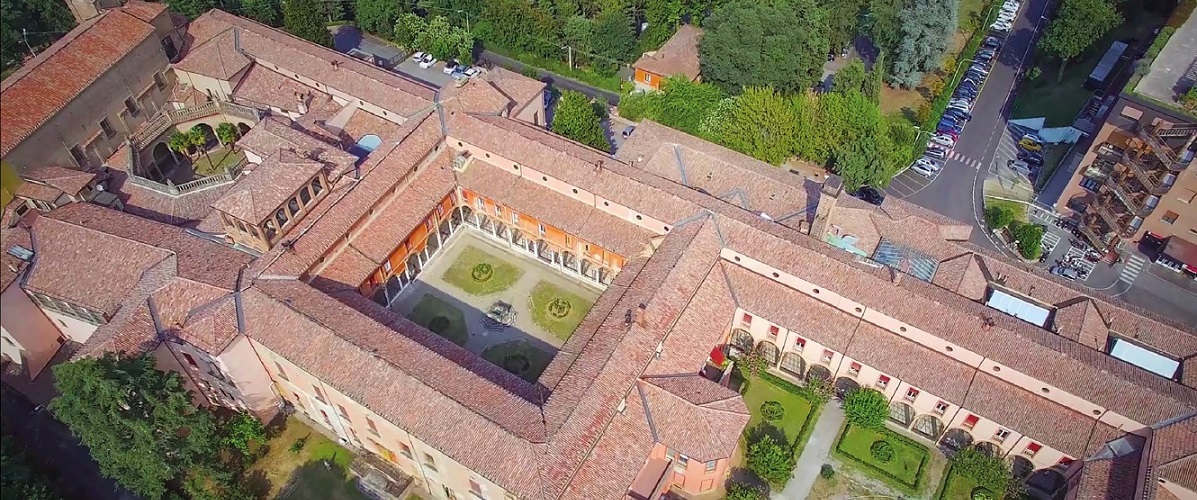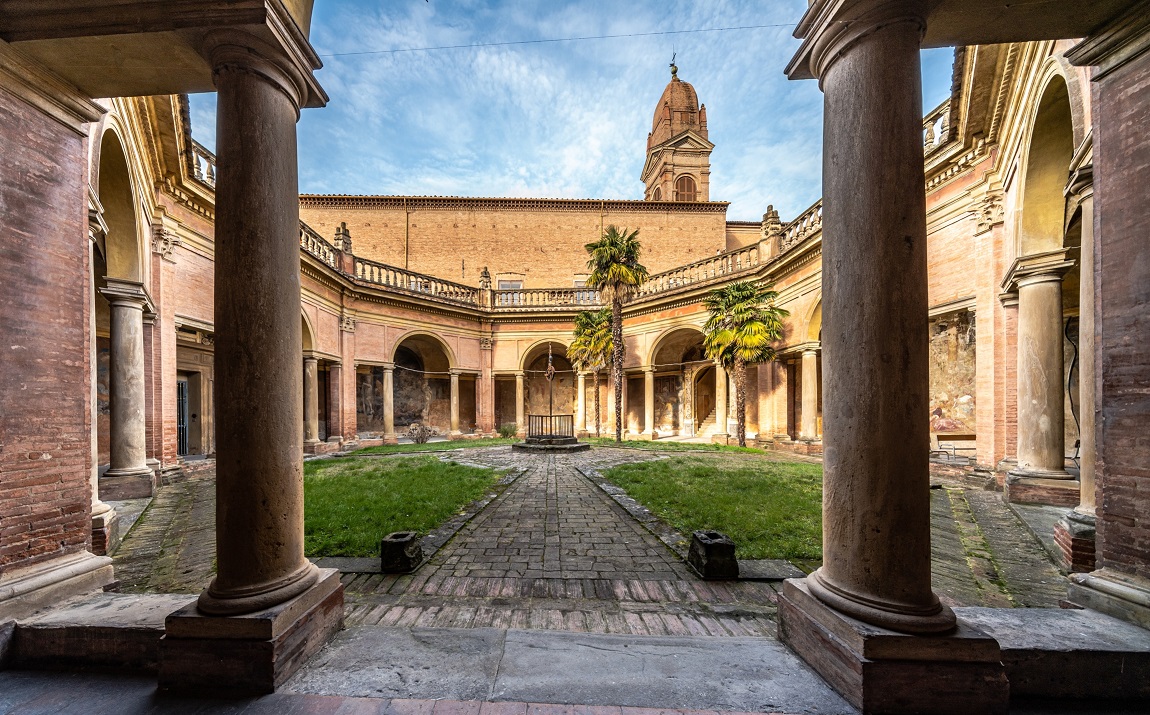
The Rizzoli Orthopedic Institute hospital is set in a monastic monumental complex, which has extraordinary architectural and artistic value and houses works of art spanning four centuries: the octagonal cloister by Ludovico Carracci and Guido Reni, the monks' ex refectory adorned by Giorgio Vasari, and the superb library frescoed in 1600 by Domenico Maria Canuti, only to name a few of the main ones.
Actually, the Rizzoli hospital was originally located in the monastery of San Michele in Bosco, situated on the hills south of Bologna. The monastery of San Michele in Bosco is a noteworthy building, whose final shape was determined by architectural additions characterized by different architects, styles and historical periods, although it is historically placed in the sixteenth century when the fundamental works were carried out: the church, the bell tower, and the cloisters.
The current monumental complex was built on previous monastic settlements, dating back to the IV century AD. After several setbacks the monastery entered a new phase with the arrival of the Olivetan monks, in 1364 by concession of Pope Urbano V. In fact, it was the Olivetan monks that in the following century began the construction of a new monastery, a part of which still remains today. The first stone was laid by Pope Eugenio IV in 1437. Ten years later, in 1447, the church must have already been completed, since it hosted the consecration of Giovanni Poggi to bishop of Bologna. The complex was restructured between 1517 and 1523; the church and the convent were extended according to the styles of the time.
Restructuring the church was an occasion to commission several works of art. In fact, between 1517 and 1525 San Michele was the stage for artists such as: Innocenzo da Imola, Bagnacavallo, Biagio Pupini and Girolamo da Cotignola, i.e. a group of artists who at that time in Bologna embodied the new word "Raffaellesque" which was by then widespread. In 1539 also Giorgio Vasari climbed the hill and painted three tablets for the refectory representing Christ in Martha's house, St. Gregorio's Supper, and Abram in the valley of Mambre. Today only a copy of the first one is in its place (the original one is temporarily at the Pinacoteca in Bologna).

Several works followed in the XVI century. In 1567 a side arm of the dormitory was finished; in 1588 Pietro Fiorini built the large staircase; between 1587 and 1590, Fiorini also built the middle cloister, called the pine cloister, which was immediately painted by Cesare Buglione; in 1592 it was the turn of the lodge, where Ludovico Carracci painted the monumental fireplace. Other important works followed, such as the novitiate, the abbatial apartment, the infirmary, and other useful places to the community life of the monks. A peculiarity of the San Michele complex is the octagonal cloister (built between 1602 and 1603 on a design by Pietro Fiorini), which cannot be compared to any other monastic complex in Bologna. The work of restructuring, decoration, and renovating the San Michele complex continued with several noteworthy interventions throughout the XVII and XVIII centuries.
